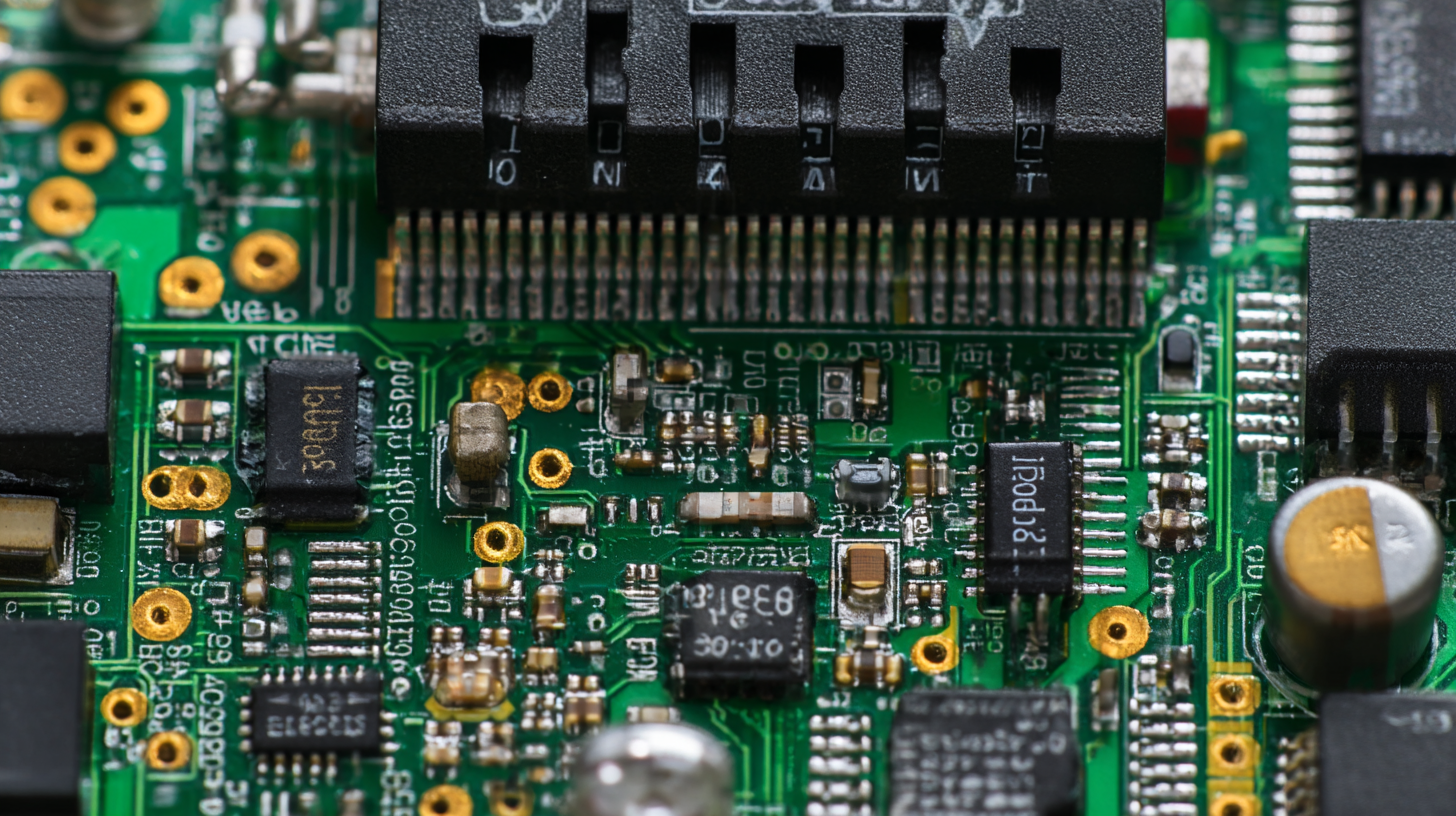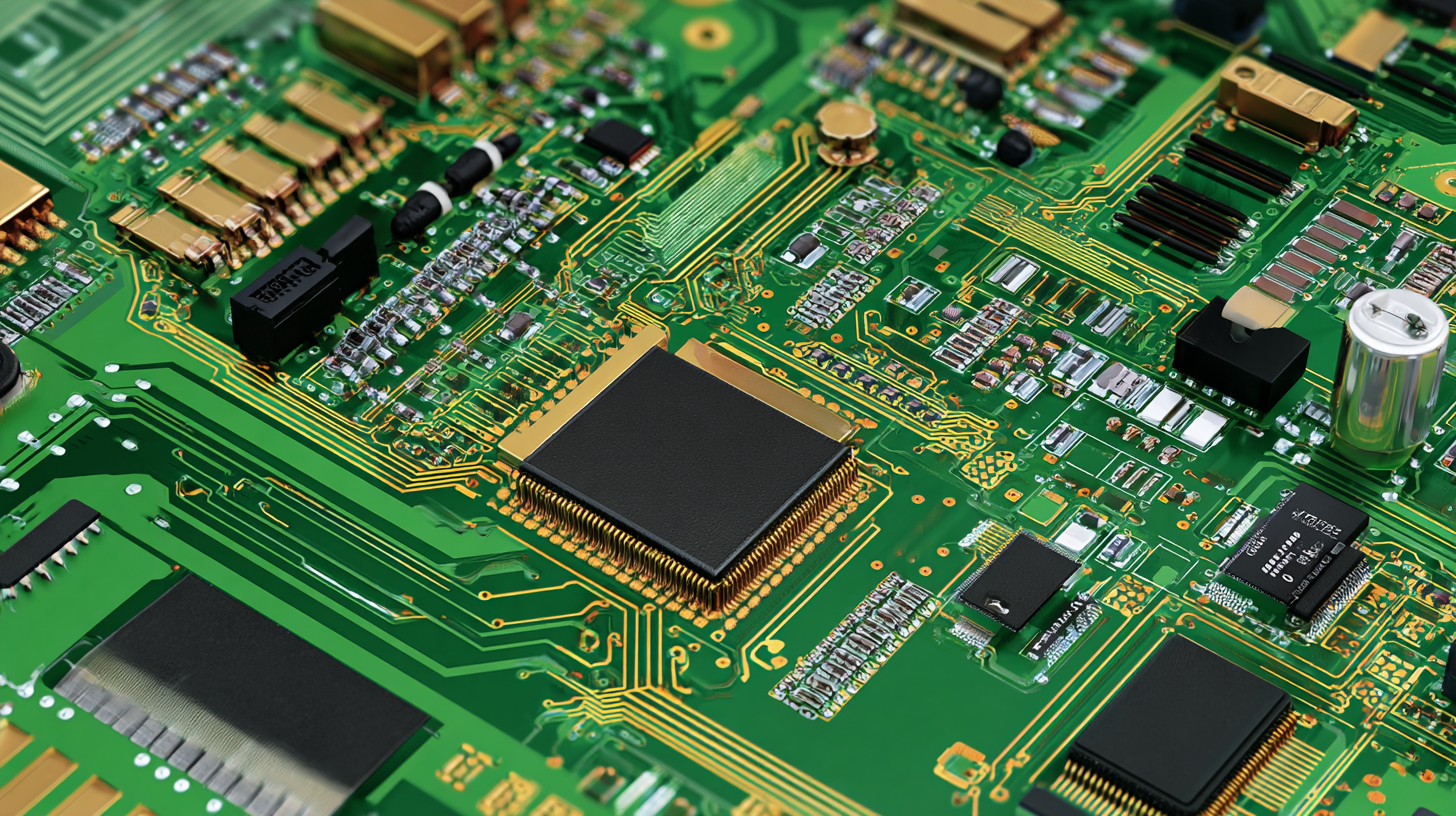- PCB Assembly
- PCB Fab
- Resources
- Company
- Blog
Ultimate Guide to Choosing the Best Pcb Printed Circuit Board for Your Projects
In the rapidly evolving landscape of electronics, the demand for high-quality Pcb Printed Circuit Boards is surging, driven by advancements in technology and the proliferation of innovative applications. According to a recent industry report by MarketsandMarkets, the global PCB market is expected to reach $80.5 billion by 2025, at a CAGR of 3.7%. This growth is anticipated to be fueled by the increasing need for smart devices, automotive electronics, and IoT applications. As project requirements become more complex, selecting the right Pcb Printed Circuit Board can significantly impact performance, reliability, and cost-effectiveness. This ultimate guide aims to equip engineers and hobbyists with the essential knowledge needed to navigate the nuanced landscape of PCB choices, ensuring successful project outcomes in an increasingly competitive environment.

Understanding PCB Basics: Types, Materials, and Applications
Understanding the fundamentals of printed circuit boards (PCBs) is crucial for selecting the right type for your projects. The PCB market is projected to reach a value of $75.9 billion in 2024, with a significant growth forecast to $110.9 billion by 2033, driven by a compound annual growth rate of 4.3%. This expansion is primarily fueled by increasing demand in sectors such as consumer electronics, automotive applications, and the growing necessity for AI integration within computing devices.
Different types of PCBs, such as HDI (High-Density Interconnect) boards, are seeing a surge in demand. The rise of AI servers is expected to significantly increase the adoption of these advanced PCBs. According to recent reports, the application of heavy copper PCBs—where thickness can range up to 5 ounces—is also on the rise, especially in automotive and high-power electronics. This diversification in PCB types and materials emphasizes the importance of understanding the specific requirements of your application to make informed decisions regarding your hardware projects.
Ultimate Guide to Choosing the Best PCB Printed Circuit Board for Your Projects
| Type of PCB | Material | Layer Count | Applications |
|---|---|---|---|
| Single-sided PCB | FR-4 | 1 | Simple devices, LED lights |
| Double-sided PCB | FR-4 | 2 | Consumer electronics, power supplies |
| Multi-layer PCB | FR-4 / Polyimide | 3 or more | Advanced electronics, telecommunications |
| Rigid PCB | FR-4 | Varies (1-64) | Computers, automotive applications |
| Flexible PCB | Polyimide | 1-2 | Wearable tech, smartphones |
| Rigid-flex PCB | FR-4 / Polyimide | Varies | Medical devices, aerospace |
The Importance of Compliance: Navigating Global Import and Export Certifications
When selecting a printed circuit board (PCB) for your projects, understanding the importance of compliance is crucial. Navigating global import and export certifications ensures that your PCBs meet industry standards, which is essential for product reliability and market acceptance. Different regions have varying requirements, and adhering to these regulations not only enhances the quality of your product but also facilitates smoother entry into international markets.
**Tip:** Always check the specific certification requirements for PCBs in your target market. For instance, certifications like CE in Europe and RoHS for hazardous substances are often mandatory. Familiarizing yourself with these regulations early in the design process can prevent costly modifications down the line.
Moreover, ensuring that your PCB supplier has a robust compliance process in place can save you time and resources. A reputable manufacturer will provide documentation and support for certifications, making it easier for you to handle the complexities of international shipping.
**Tip:** Ask your supplier about their compliance history and documented processes. This can give you confidence that they prioritize quality and can meet the necessary standards for your projects.
How to Evaluate PCB Manufacturers: Quality, Reliability, and Standards
When evaluating PCB manufacturers, it's essential to prioritize quality, reliability, and adherence to industry standards. According to a report by IPC, the global trade association for the electronics industry, over 80% of PCB failures are attributable to issues during manufacturing. This highlights the importance of selecting a manufacturer that maintains rigorous quality control protocols. Look for certifications such as ISO 9001 and IPC-A-600, which indicate adherence to established quality management and inspection standards that can significantly reduce the likelihood of defects in your final product.
Reliability in PCB manufacturing can also be assessed through a manufacturer’s track record and customer testimonials. A report from TechSearch International suggests that high-quality PCBs can lead to up to a 30% reduction in production costs over time due to fewer failures and reworks. Therefore, it’s vital to partner with manufacturers who have proven longevity and reliability in the market, supported by metrics such as average turnaround time and defect rates. Additionally, understanding the technological capabilities of potential manufacturers—like their ability to produce HDI or flexible PCBs—can ensure your projects meet modern design demands without compromising on dependability.
PCB Quality Characteristics Evaluation
Design Considerations: Essential Features for Your PCB Layout
When creating a printed circuit board (PCB) layout, understanding the essential features that influence performance and manufacturability is crucial. First, consider the layer stack-up, which determines how many layers your PCB will have. A well-planned stack-up can reduce signal interference and optimize the routing of power and ground planes, resulting in improved circuit performance. Also, ensure adequate spacing between traces to prevent short circuits and maintain signal integrity, especially in high-frequency applications.
Next, the component placement is a vital design consideration. Strategically placing components minimizes trace lengths, which can reduce inductance and capacitance, critical for high-speed designs. It’s important to follow design rules for thermal management as well; placing heat-sensitive components away from high-power parts ensures reliability. Additionally, integrating features like vias for inter-layer connections and test pads for diagnostic purposes can streamline the manufacturing process and enhance the functionality of your PCB, ensuring your project meets its electrical requirements efficiently.

Best Practices for Sourcing PCBs: Tips for Cost-Effectiveness and Efficiency
When sourcing PCBs for your projects, implementing best practices can significantly enhance cost-effectiveness and efficiency. One of the first steps is to clearly define your project requirements, including size, layer count, and material specifications. This allows you to accurately communicate with suppliers, reducing the risk of misunderstandings and unwanted costs during the manufacturing process. Utilizing detailed documentation, such as Gerber files and Bill of Materials (BOM), can streamline communication and ensure precise production.
Additionally, consider taking a strategic approach to supplier selection. Building relationships with multiple manufacturers can provide leverage in negotiations and help you compare services, turnaround times, and pricing structures. Always ask for quotes from different sources and take note of their production capabilities, as local suppliers may offer faster lead times, while overseas manufacturers might present lower costs. Lastly, prioritize quality assurance by opting for suppliers that adhere to industry standards and offer thorough testing options, as this will help mitigate risks in your final product.

Phone
 WhatsApp
WhatsAppEmail
Offer Electronics Manufacturing All-in-One
PCBONLINE® is a registered trademark or service mark of pcb online limited or its affiliates.
Copyright © 2001-2024 Pcb Online Limited. All rights reserved